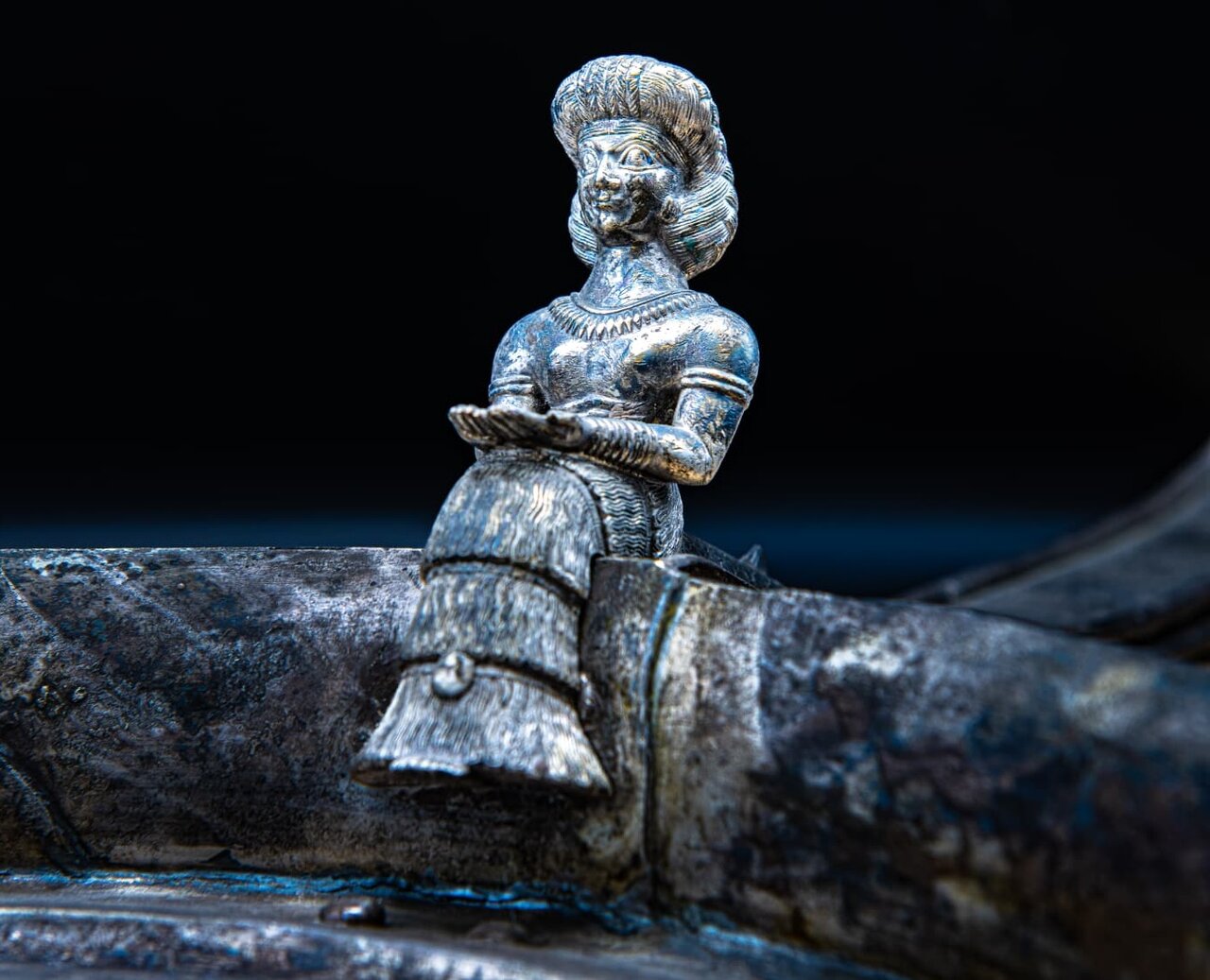Unveiling Elam: The Dawn of Iranian Civilization at Persepolis

SHIRAZ - The National Museum of Iran inaugurated the exhibition “Elam: The Dawn of Iranian Civilization” at the Persepolis Museum on November 6.
The inauguration ceremony of the month-long exhibition was attended by the deputy minister of cultural heritage, Ali Darabi, the National Museum director, Jabreail Nokandeh, and Fars province’s tourism chief, Mohammad Sabet-Eqlidi along with a host of cultural heritage enthusiasts and journalists.
The event, which coincided with the third International Multimedia Festival of Cultural Heritage, showcases 40 lesser-seen artifacts from ancient Elam, spanning periods such as the Proto-Elamite (2700-3300 BC), Old Elamite (1700-2400 BC), Middle Elamite (1500-1000 BC), Neo-Elamite (550-740 BC), and the Achaemenid era (Darius I, 522-486 BC).
The collection features gold, silver, and terracotta objects unearthed from significant archaeological sites including Susa (Royal city), Chogha Zanbil, Chogha Mish, Tall-e Malyan, Arisman, Sialk, Jalyan, Marvdasht, Arjan, Jubeji, and Persepolis. This marks the first independent exhibition dedicated to Elamite civilization, aiming to highlight the Elamite heritage of the Achaemenids, who regarded themselves as descendants of Elamite rulers from Anshan and Susa.
According to organizers, the exhibition seeks to connect the grandeur of the Achaemenid period with the rich cultures that preceded it.
Glimpses of Elamite Empire
The name Elam was given to the region by others– the Akkadians and Sumerians of Mesopotamia–– and is thought to be their version of what the Elamites called themselves– Haltami (or Haltamti)– meaning “those of the high country.” ‘Elam’, therefore, is usually translated to mean “highlands” or “high country” as it comprised settlements on the Iranian Plateau that stretched from the southern plains to the elevations of the Zagros Mountains.
Susa was formerly the capital of the Elamite Empire and later an administrative capital of the king of Achaemenian, Darius I and his successors of 522 BC. Throughout the late prehistoric periods, Elam was closely tied culturally to Mesopotamia. Later, perhaps because of domination by the Akkadian dynasty (c. 2334–c. 2154 BC), the Elamites adopted the Sumero-Akkadian cuneiform script.
Documents from the second period, which lasted from the 16th to the 8th century BC, are written in cuneiform; the stage of the language found in these documents is sometimes called Old Elamite. The last period of Elamite texts is that of the reign of the Achaemenian kings of Persia (6th to 4th century BC), who used Elamite, along with Akkadian and Old Persian, in their inscriptions. The language of this period, also written in the cuneiform script, is often called New Elamite.
Although all three stages of Elamite have not been completely deciphered, several grammatical features of the language are known to scholars. These include a plural formation using the suffix -p, the personal pronouns, and the endings of several verb forms.
The Elamite language is an extinct language spoken by the Elamites in the ancient country of Elam, which included the region from the Mesopotamian plain to the Iranian Plateau. According to Britannica, Elamite documents from three historical periods have been found. The earliest Elamite writings are in a figurative or pictographic script and date from the middle of the 3rd millennium BC.
AM
Leave a Comment